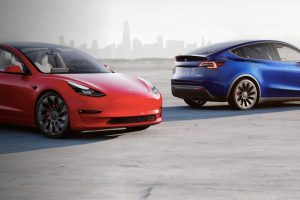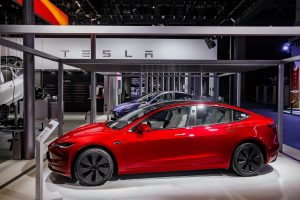Tesla’s FSD Beta program has over 100,000 drivers actively participating, Elon Musk revealed during his TED interview. Musk also stated that Tesla would achieve full-self driving this year — this time, he is more confident.
Chris Anderson hosted Elon Musk during his latest TED talk interview. Anderson asked about Musk’s latest timeline for Tesla to achieve full self-driving. The TED host clarified that by “achieving full self-driving” he meant Tesla cars could drive around most cities without human interventions, safer than a human driver.
“Yes, I mean, the car currently drives me around Austin most of the time with no interventions,” Musk replied. And we have over 100,000 people in our full self-driving beta program.”
Anderson delved deeper into the development of Tesla’s self-driving program to better understand why Musk’s previous one-year or two-year timeline for the autonomous software didn’t reach fruition. Musk explained there were “so many false dawns” in the self-driving program. There were plenty of times when Tesla believed it was making actual progress. He said that Tesla’s progress was like a log curve.
Speaking about log curves, Elon Musk told Anderson: “It goes up — you know — sort of fairly straight away. And then it starts tailing off, and you start getting diminishing returns.”
Musk shared that Tesla’s journey with full self-driving was a series of log curves for a bit where it felt like they were making strides, but then progress seemed to hit a ceiling, and they’d have to start again. However, it appears that Tesla has gone down the right path now.
“And ultimately, These things — you know — in retrospect, they seem obvious, but in order to solve full self-driving properly, you actually have to solve real-world AI,” Musk said.
The realization that Tesla has to solve real-world AI led to adoption and further developments of Tesla Vision — the company’s camera-only strategy for autonomous driving. With Tesla Vision, the company’s cars function more like a human with eyes. So for Tesla, neural nets act as the brain, and the cameras act as eyes — a connection that has ultimately led to Tesla’s humanoid robot Optimus.
Elon Musk believes that with the current architecture, Tesla can increase the probability of vehicles avoiding an accident compared to a human driver behind the wheel. He attributed his confidence in the new architecture to Tesla reaching high-quality unified vector space for full self-driving.
Watch Elon Musk’s recent TED talk with Chris Anderson below!





